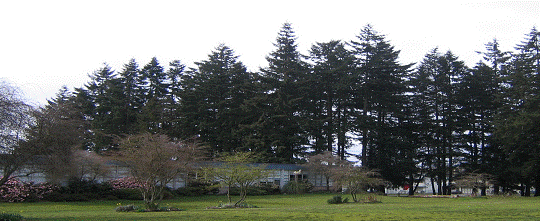The decision starts with consideration of SMC 25.05.675.N.2 which states
“a. It is the City’s policy’s policy to minimize or prevent loss of wildlife habitat and other vegetation which have substantial aesthetic, educational, ecological and/or economic value. A high priority shall be given to the preservation and protection of special habitat types…
b. For projects which are proposed within an identified plant or wildlife habitat or travelway, the decision maker shall assess the extent of the adverse impacts and the need for mitigation.
c. When the decisionmaker finds that a proposed project would reduce or damage rare, uncommon, unique, or exceptional plant or wildlife habitat, wildlife travelways or habitat diversity for species (plants or animals) of substantial aesthetic, educational, ecological and/or economic value, the decisionmaker may condition or deny the project to mitigate its adverse impacts…
d Mitigating measures may include but are not limited to:
i. relocation of the project on the site;
ii Reducing the size or scale of the project; …”
The Seattle Hearing Examiner noted that her “review in this case is limited to whether the Director committed a clear error in her decision on the SEPA conditioning for the project.”
The Hearing Examiner stated,
“Appellants have argued that DPD erred by failing to treat the NW grove as a rare or uncommon habitat under SMC 25.05.675.N.2. It is not clear whether DPD considered the grove to be rare or uncommon, but the northwest grove is an uncommon plant habitat under the SEPA policy. … The northwest grove is uncommon on account of the conifer/madrone/salal plant association which is present, and the relative scarcity of that association.
The proposal would reduce by half an uncommon habitat that the City’s SEPA policy says must be protected. Given the difficulty or impossibility of replacing this amount of habitat on the site, avoidance or reduction of impacts on the grove is required if such measures are reasonable and capable of being accomplished. In this case DPD did not evaluate whether the location or the structure footprint could be altered to avoid or minimize impacts on the NW grove, and this was an error in light of SMC 25.05.675.N.2.
The record is limited since no alternatives were required to be analyzed in the DNS, and the project was not subject to the City’s design review process, where designs are typically scrutinized for reasonableness. Appellants point to the alternatives rejected by the District as mitigation measures: building a second story on the existing LMC building; placing the addition in the north lawn area; or moving it to the south where the portables are located. Appellants also note that the planned courtyard area places the addition further into the grove”….
“… on the record here, the use of other areas on this 28 acre campus, or at least the reduction of the proposed building footprint, would not be unreasonable or unworkable. Therefore the decision will be remanded to DPD to require additional mitigation in the form of relocation outside of the grove, or at least reduction of the addition’s intrusion into the northwest grove.”
Save the Trees- Seattle believes the only reasonable and viable alternative is to relocate the building outside the grove, like on the open north lawn area. DOT Arborist Bill Ames suggested in an e-mail early on that “Tree removal in the NW corner of the site (the new addition) seems excessive and can be modified in favor of the existing trees. One option would be to site the addition nearer to the existing building and creating a walkway, as opposed to the proposed courtyard, between the new and existing building.”
The Seattle School District said this was not possible as current fire code regulations say any new building must be separated from the existing building by the width they made the courtyard. They do not want to add the building directly onto the existing building because this will block existing classroom windows.
In addition a number of the madrone trees are currently on the east side of the NW Forest area and would be cut down no matter how close the addition is to the existing structure.
The reality is there is no need to cut down any of the NW Forest. The Seattle School District asked Integrus Architecture to draw up an Ingraham Master Plan for how the school could expand in the future. They picked the north lawn site as a preferred site to put a future two story building and e-mails.
We discovered through a public records request to the Seattle School District e-mails confirming placing utilities on the North Lawn area so as to be prepared for this option. The current proposed building should be moved to this site now. The school can have both its new classrooms and save the trees at the same time.
Chairperson
Save the Trees – Seattle


